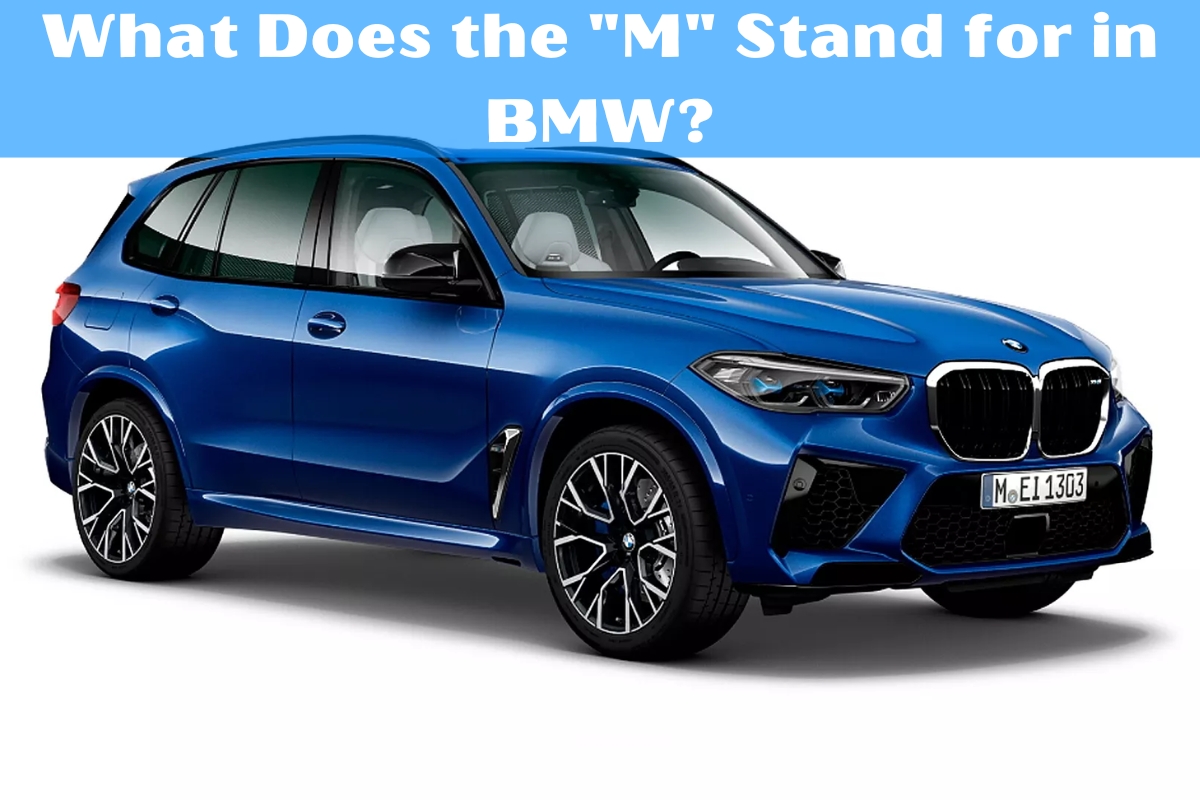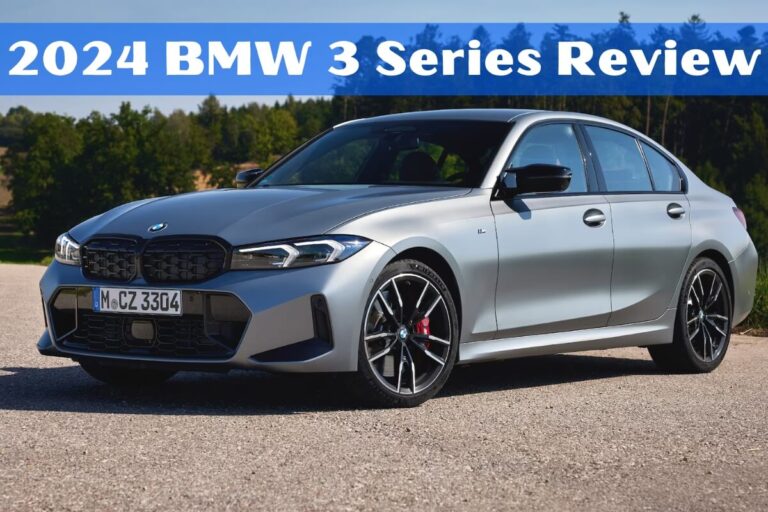What Does the “M” Stand for in BMW?

If you’re a car enthusiast, the letter “M” in BMW’s lineup likely piques your interest. The “M” designation signifies the brand’s highest-performing, most thrilling models – but what exactly does that “M” stand for?
In this in-depth article, we’ll dive into the history and meaning behind the BMW M brand, exploring the origins of the “M” moniker, the iconic M logo and color scheme, the role of M models in BMW’s racing heritage, and the key differences between M vehicles and the brand’s other performance-focused offerings. We’ll also take a look at the current M model lineup, the engineering behind these high-powered machines, and what the future may hold for BMW’s motorsport division.
The Origins of the BMW M Division
The roots of the BMW M division can be traced back to the early 1970s, when the German automaker was heavily involved in motorsports competitions. In 1972, BMW established a new subsidiary called BMW Motorsport GmbH, with the goal of facilitating and professionalizing the company’s racing activities under a unified identity.
The “M” in BMW M originally stood for “Motorsport.” The newly formed division was tasked with modifying and tuning BMW’s production vehicles for use in various racing series, as well as developing purpose-built competition cars. This allowed BMW to distinguish its race-ready models from the more pedestrian offerings available to the general public.
As time progressed, BMW Motorsport GmbH began to supplement the brand’s standard vehicle lineup with specially modified, high-performance versions for sale to consumers. These “M” models featured a wide array of upgrades, including more powerful engines, enhanced transmissions, beefed-up suspensions, aerodynamic enhancements, and distinctive styling cues.
In 1993, the division officially changed its name to BMW M GmbH, further solidifying its position as a standalone, high-performance sub-brand within the BMW ecosystem.
The Meaning Behind the BMW M Logo and Colors
The iconic BMW M logo and color scheme are as instantly recognizable as the vehicles themselves. But what do these design elements represent, and how did they come to be?
The three-color M logo – featuring shades of blue, violet, and red – was the brainchild of a team of BMW designers and engineers in the early 1970s. According to the company, the blue hue represents BMW’s core brand identity, the red symbolizes the thrill of motorsports, and the violet blend of the two signifies the unique fusion of these elements.
The M logo’s origins can be traced back to the BMW 3.0 CSL “Batmobile,” which debuted the tri-color scheme on the racetrack in 1973. This striking visual identity quickly became synonymous with BMW’s high-performance offerings, cementing the M brand’s reputation for uncompromising power and precision.
Over the years, the M logo has undergone various iterations, but the essential three-color design has persisted, evolving to incorporate more modern and angular forms. Today, the M insignia serves as a badge of honor, proudly displayed on the marque’s most exhilarating models.
The Role of BMW M in Racing and Performance
BMW’s motorsport heritage is a crucial part of the M brand’s DNA. The company’s racing exploits throughout the 1960s and 1970s laid the groundwork for the development of its high-performance production vehicles.
Notable successes include the BMW 3.0 CSL’s dominance in the European Touring Car Championship and the 24 Hours of Le Mans, as well as the iconic BMW M1 supercar’s presence in the short-lived Procar series. These victories on the track directly influenced the creation of the first “M” models intended for public consumption, such as the M535i and the legendary M1.
As BMW’s M division expanded, its focus shifted from pure race cars to more road-oriented performance models. However, the brand’s commitment to motorsports has never waned. M-badged vehicles continue to compete at the highest levels of international racing, with the M8 GTE and M4 GT3 serving as the latest examples of BMW’s unwavering dedication to motorsport excellence.
The Difference Between BMW M and BMW M Sport
It’s important to note that not all BMW models bearing the “M” designation are created equal. The automaker offers a tiered performance hierarchy, with the full-fledged M cars sitting at the top, followed by the M Sport packages available on select models.
True BMW M vehicles, such as the M3, M4, and M5, are the brand’s most hardcore, track-focused offerings. These models undergo extensive modifications, including uprated engines, transmissions, suspensions, brakes, and aerodynamics, to deliver uncompromising driving dynamics and track-worthy performance.
In contrast, the M Sport package is a more attainable option that adds a sportier aesthetic and mild performance upgrades to standard BMW models. While M Sport-equipped cars offer a heightened level of driving enjoyment, they don’t quite reach the same heights of engineering and capability as the dedicated M models.
Visually, the differences between true M cars and M Sport variants are subtle but distinct. M models feature larger “M” badging on the grille and trunk, as well as unique wheel and trim designs. The M Sport package, on the other hand, typically includes smaller M badges, sportier bumpers, and performance-inspired accents.
The BMW M Model Lineup
Over the decades, BMW’s M division has expanded its portfolio to include a diverse range of high-performance models, catering to the needs of enthusiasts and high-performance seekers alike.
The current M lineup includes a mix of sports cars, sedans, and SUVs, each offering its own unique blend of power, handling, and driving excitement. Some of the most prominent M models include:
- M2: The compact, two-door M2 is often hailed as one of the purest expressions of the M brand, delivering thrilling performance in a nimble package.
- M3 and M4: The iconic M3 sedan and its M4 coupe sibling are considered benchmarks in the high-performance luxury car segment, renowned for their razor-sharp handling and potent engines.
- M5 and M8: BMW’s flagship M models, the M5 and M8, represent the pinnacle of the brand’s performance prowess, with jaw-dropping acceleration and impressive track capabilities.
- X3 M and X4 M: The high-performance SUV duo of the X3 M and X4 M bring the thrill of M-powered driving to the utility vehicle segment.
- M Performance Models: Bridging the gap between standard BMW models and full-fledged M cars, the M Performance lineup includes models like the M340i, M440i, and X5 M50i, offering a heightened level of performance without sacrificing everyday usability.
The Manufacturing and Engineering of BMW M Cars
While BMW’s standard production vehicles are built at the company’s various global manufacturing facilities, the M division’s most exclusive models are assembled at a dedicated facility – the BMW Group’s private test track at the Nürburgring in Germany.
This state-of-the-art complex, known as the Nürburgring Nordschleife, serves as the epicenter of BMW M’s development and testing processes. Here, teams of highly skilled engineers, technicians, and racing drivers work tirelessly to fine-tune every aspect of the M cars, from their powerful engines and responsive transmissions to their meticulously tuned suspensions and brakes.
The Nürburgring’s challenging 12.9-mile Nordschleife circuit, often referred to as the “Green Hell,” provides the perfect testing ground for BMW M’s high-performance creations. Each model undergoes extensive real-world evaluation and validation on this legendary track, ensuring that they can deliver the exceptional levels of power, handling, and driving engagement that define the M brand.
This relentless pursuit of perfection, combined with BMW’s commitment to innovative engineering and materials, has resulted in a lineup of M models that consistently push the boundaries of what’s possible in the world of performance automobiles.
The Future of BMW M in a Changing Automotive Landscape
As the automotive industry continues to evolve, with growing emphasis on sustainability, efficiency, and electrification, the BMW M division faces a unique set of challenges and opportunities.
The shift towards stricter emissions regulations and the growing consumer demand for eco-friendly mobility solutions have forced BMW to adapt its high-performance portfolio. The M division has responded by embracing alternative powertrain technologies, such as the introduction of hybrid and electric variants of existing M models.
For example, the recently unveiled BMW XM concept previews the brand’s first-ever plug-in hybrid M vehicle, blending electrified power with the trademark performance and handling that M customers have come to expect. This integration of sustainable technology with the core DNA of the M brand represents a significant step forward as BMW navigates the rapidly changing automotive landscape.
Despite these changes, the M division’s unwavering commitment to driver engagement and motorsport heritage remains steadfast. As the brand continues to evolve, enthusiasts can be confident that the essence of what makes an M car so special – the perfect balance of power, precision, and pure driving joy – will endure, adapting to meet the demands of a new generation of performance-minded consumers.
Conclusion: The Enduring Legacy of the BMW M Brand
The “M” in BMW has long been a symbol of uncompromising performance, engineering excellence, and racing pedigree. From the brand’s early motorsport roots to the expansive lineup of high-powered production models available today, the M division has consistently delivered thrilling driving experiences that have cemented its status as one of the most desirable and respected automotive sub-brands in the world.
As BMW navigates the rapidly evolving automotive landscape, the M division’s commitment to innovation and driver engagement will undoubtedly continue to shape the future of high-performance motoring. Whether it’s the iconic M3, the brutish M5, or the electrified SUVs of tomorrow, the “M” badge will forever represent the pinnacle of BMW’s engineering prowess and the unwavering pursuit of the ultimate driving machine.






